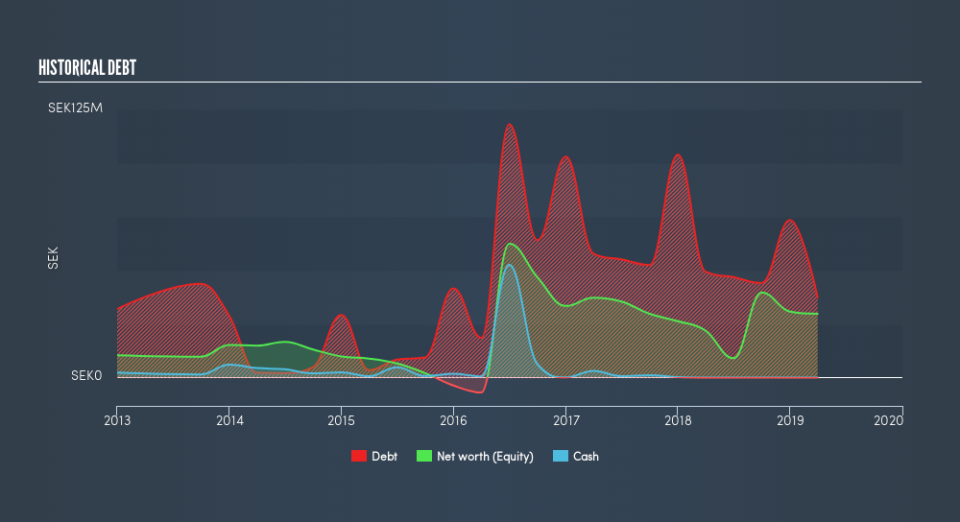Are Clemondo Group AB (publ)'s (STO:CLEM) Interest Costs Too High?

Want to participate in a short research study? Help shape the future of investing tools and you could win a $250 gift card!
While small-cap stocks, such as Clemondo Group AB (publ) (STO:CLEM) with its market cap of kr92m, are popular for their explosive growth, investors should also be aware of their balance sheet to judge whether the company can survive a downturn. Given that CLEM is not presently profitable, it’s crucial to assess the current state of its operations and pathway to profitability. We'll look at some basic checks that can form a snapshot the company’s financial strength. However, these checks don't give you a full picture, so I’d encourage you to dig deeper yourself into CLEM here.
Does CLEM Produce Much Cash Relative To Its Debt?
CLEM's debt levels have fallen from kr49m to kr37m over the last 12 months , which includes long-term debt. With this debt payback, CLEM's cash and short-term investments stands at below SEK10K, which is concerning. Additionally, operating cash flow was negative over the last twelve months. As the purpose of this article is a high-level overview, I won’t be looking at this today, but you can assess some of CLEM’s operating efficiency ratios such as ROA here.
Does CLEM’s liquid assets cover its short-term commitments?
With current liabilities at kr93m, the company may not be able to easily meet these obligations given the level of current assets of kr74m, with a current ratio of 0.8x. The current ratio is the number you get when you divide current assets by current liabilities.
Does CLEM face the risk of succumbing to its debt-load?
With total debt exceeding equity, CLEM is considered a highly levered company. This is a bit unusual for a small-cap stock, since they generally have a harder time borrowing than large more established companies. But since CLEM is presently unprofitable, there’s a question of sustainability of its current operations. Running high debt, while not yet making money, can be risky in unexpected downturns as liquidity may dry up, making it hard to operate.
Next Steps:
CLEM’s high cash coverage means that, although its debt levels are high, the company is able to utilise its borrowings efficiently in order to generate cash flow. Though its low liquidity raises concerns over whether current asset management practices are properly implemented for the small-cap. I admit this is a fairly basic analysis for CLEM's financial health. Other important fundamentals need to be considered alongside. I suggest you continue to research Clemondo Group to get a more holistic view of the stock by looking at:
Future Outlook: What are well-informed industry analysts predicting for CLEM’s future growth? Take a look at our free research report of analyst consensus for CLEM’s outlook.
Valuation: What is CLEM worth today? Is the stock undervalued, even when its growth outlook is factored into its intrinsic value? The intrinsic value infographic in our free research report helps visualize whether CLEM is currently mispriced by the market.
Other High-Performing Stocks: Are there other stocks that provide better prospects with proven track records? Explore our free list of these great stocks here.
We aim to bring you long-term focused research analysis driven by fundamental data. Note that our analysis may not factor in the latest price-sensitive company announcements or qualitative material.
If you spot an error that warrants correction, please contact the editor at editorial-team@simplywallst.com. This article by Simply Wall St is general in nature. It does not constitute a recommendation to buy or sell any stock, and does not take account of your objectives, or your financial situation. Simply Wall St has no position in the stocks mentioned. Thank you for reading.


